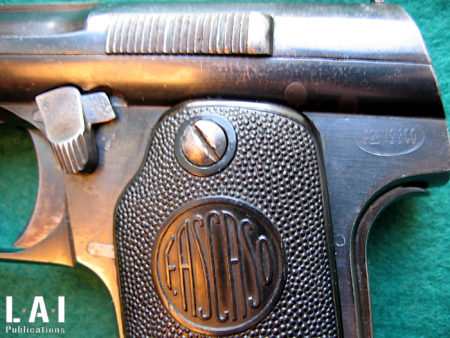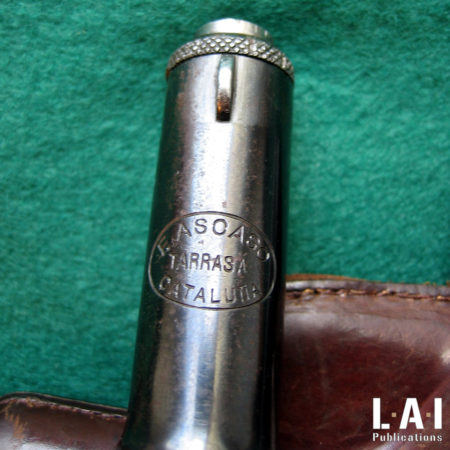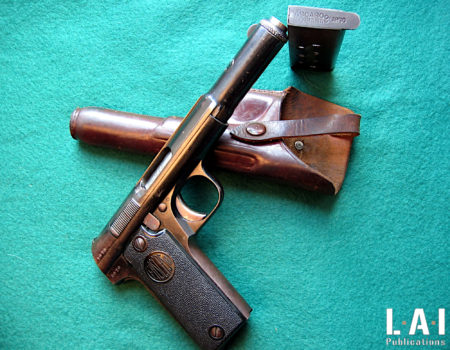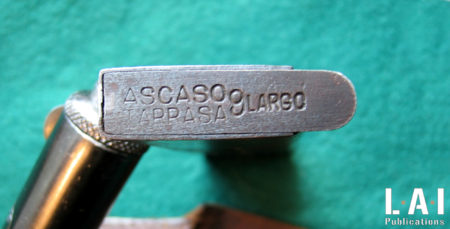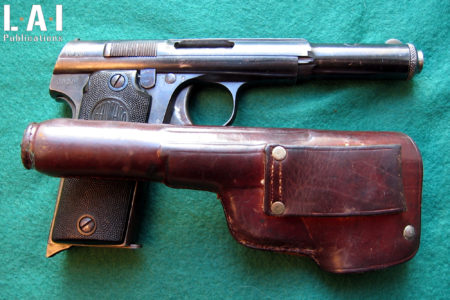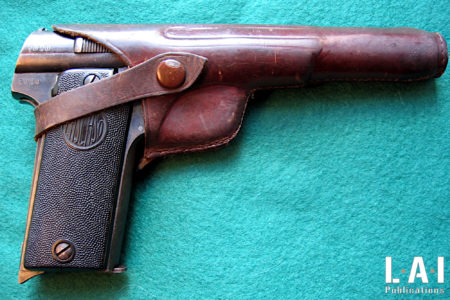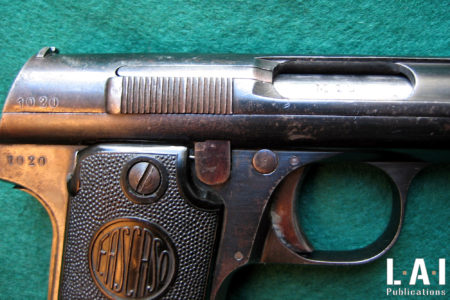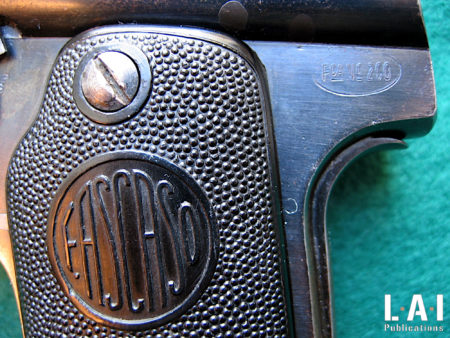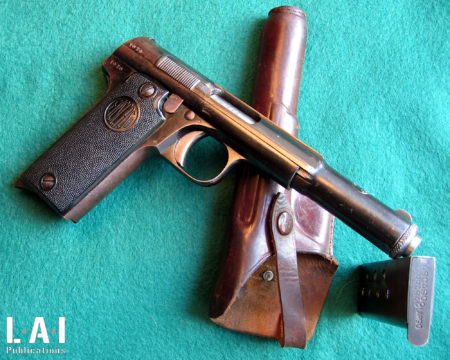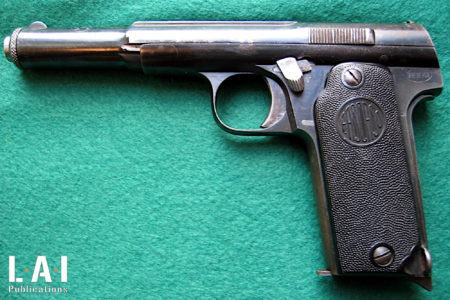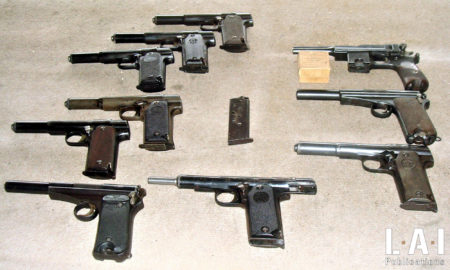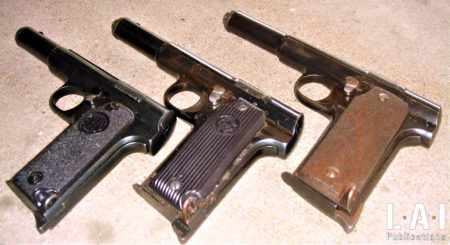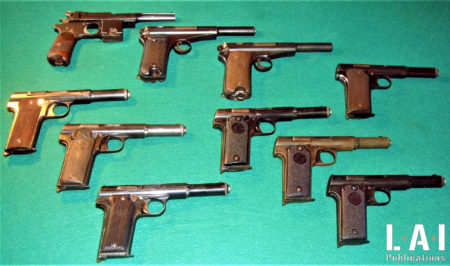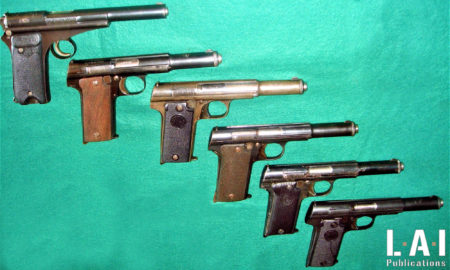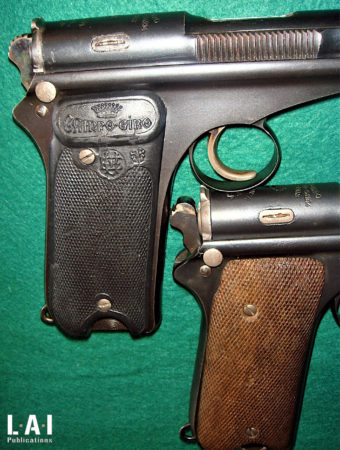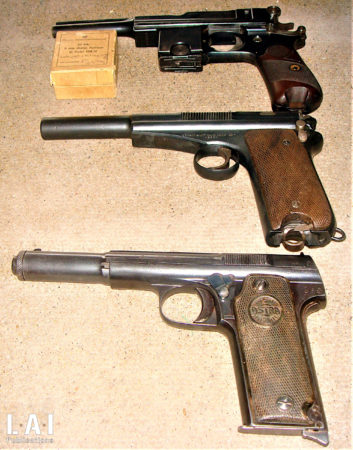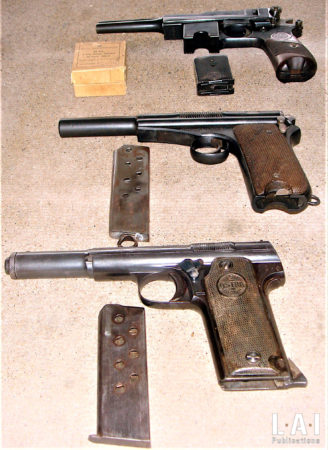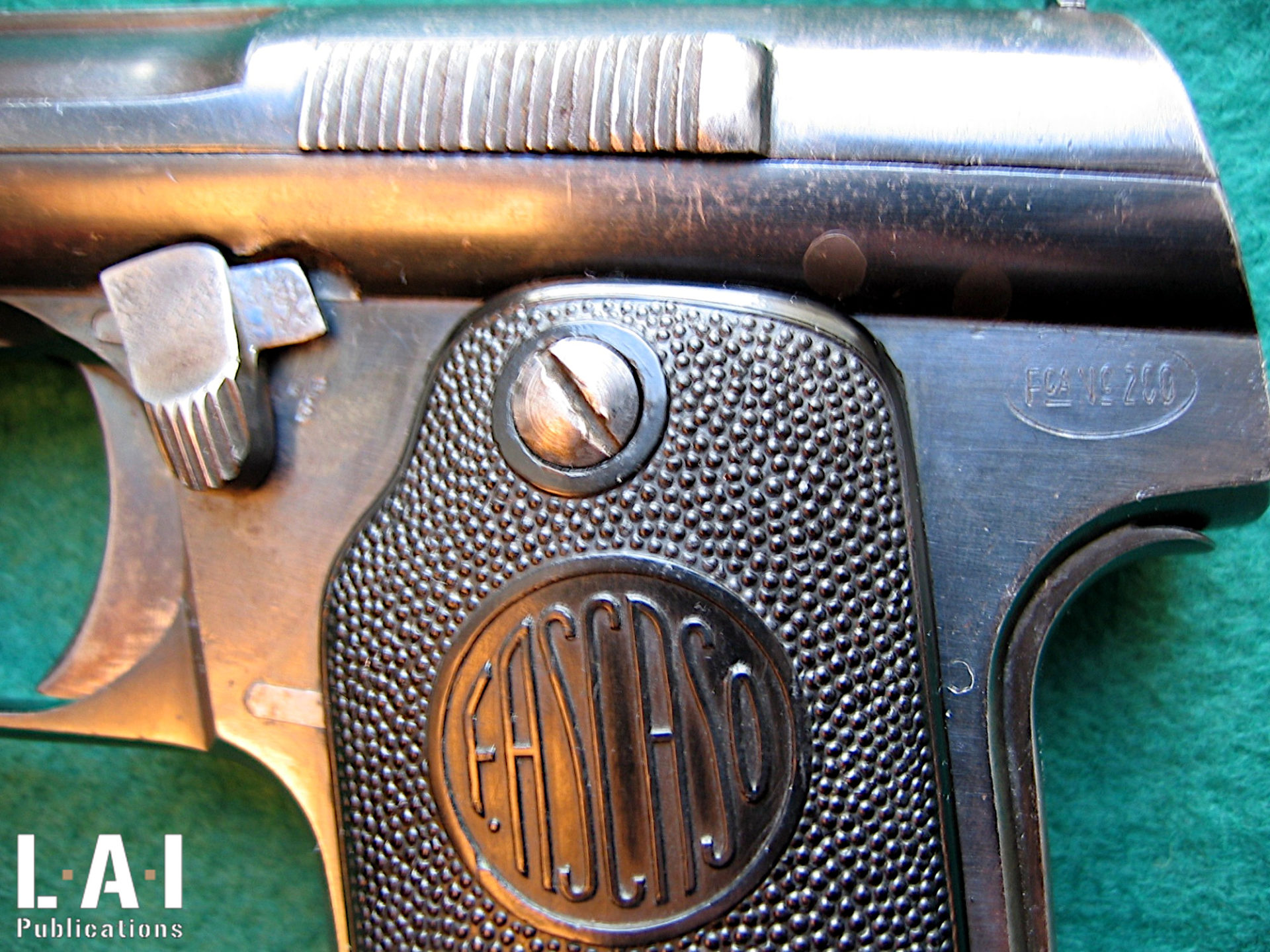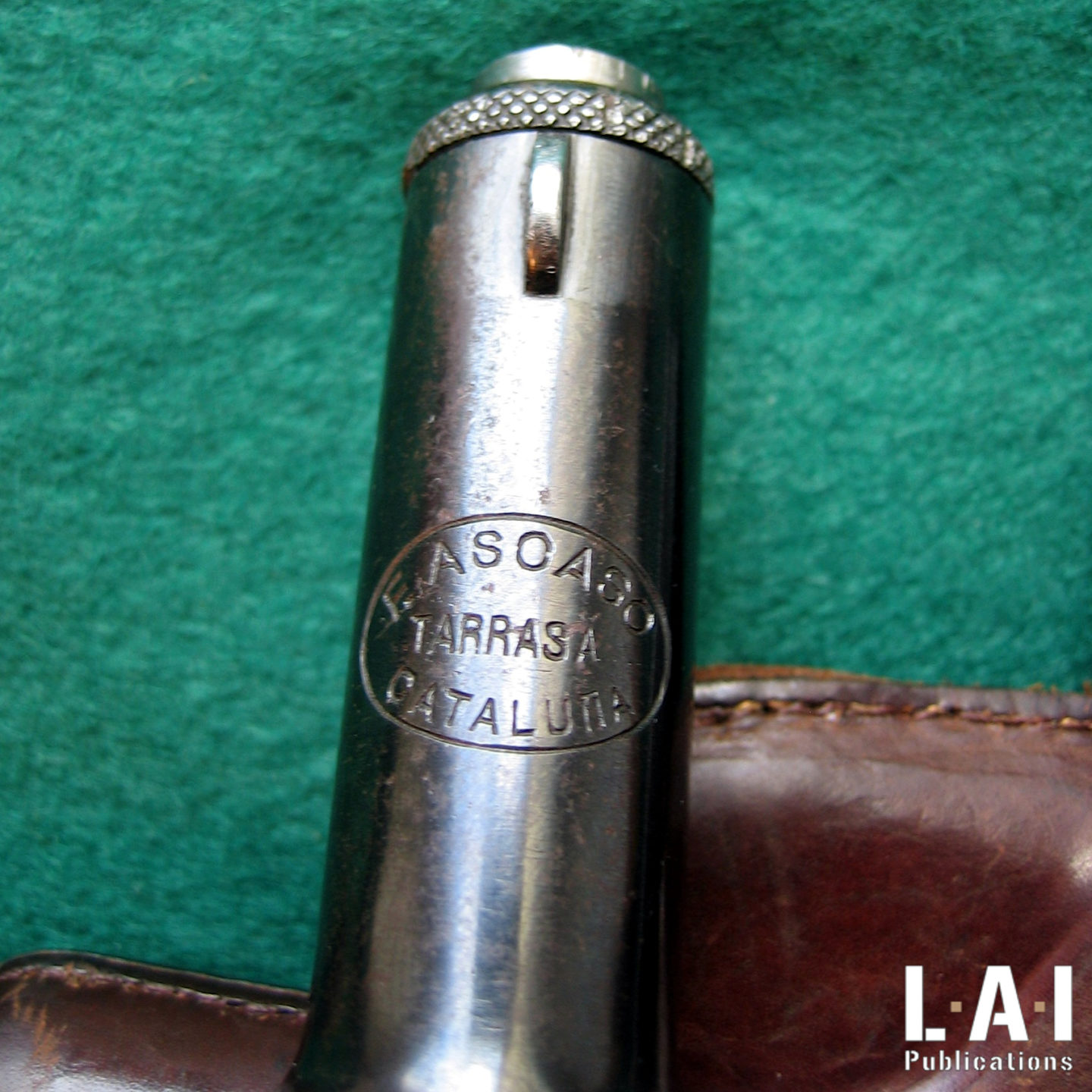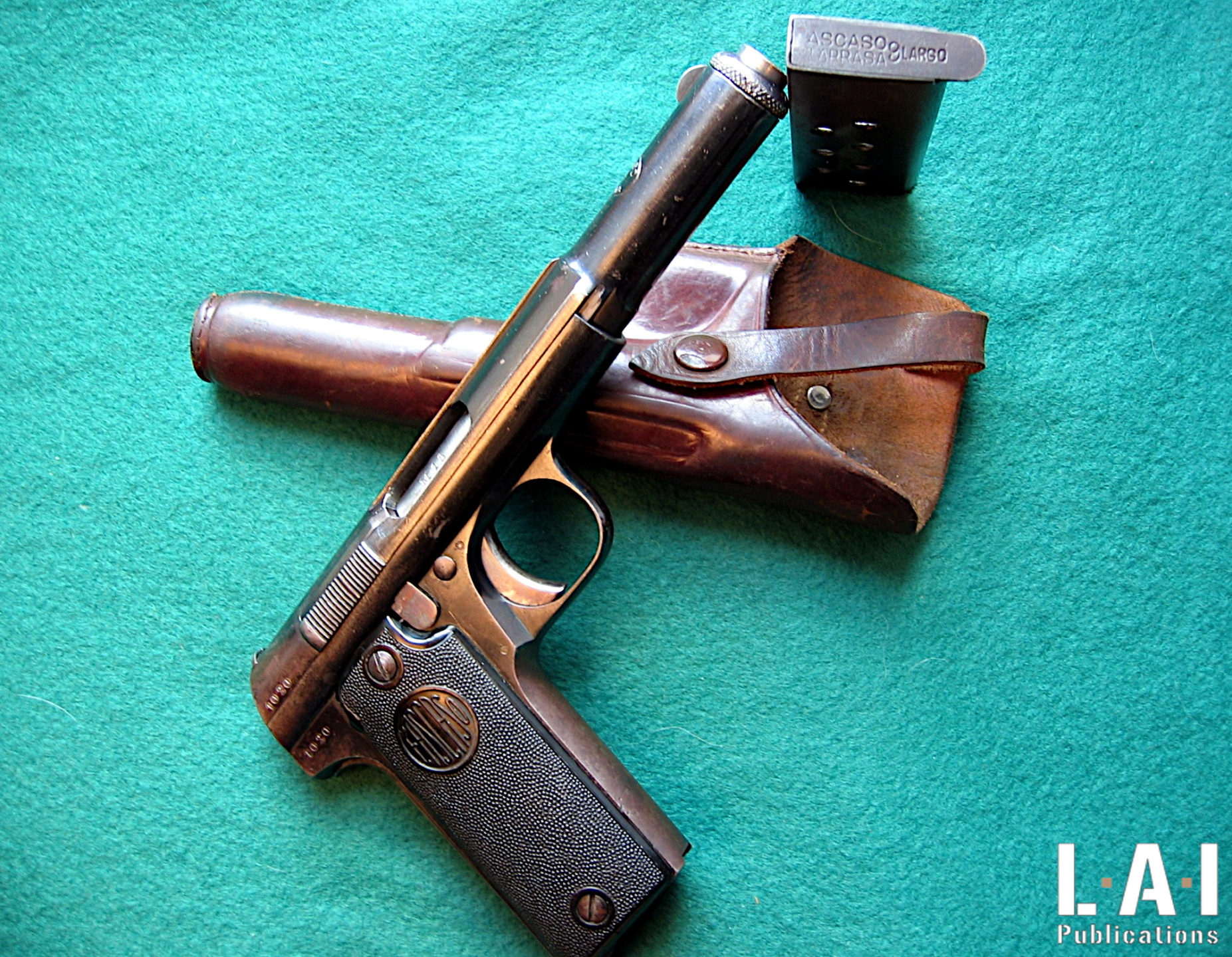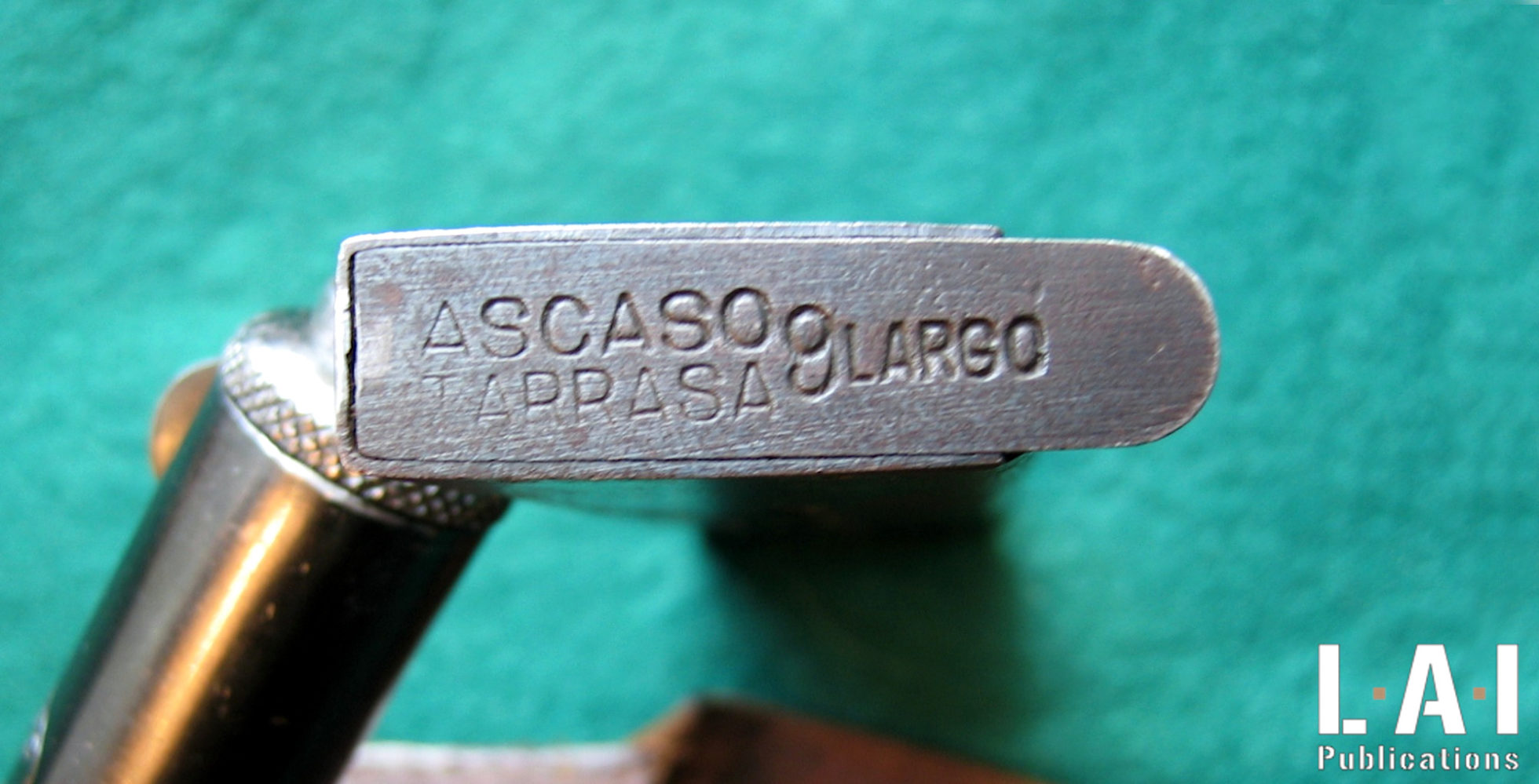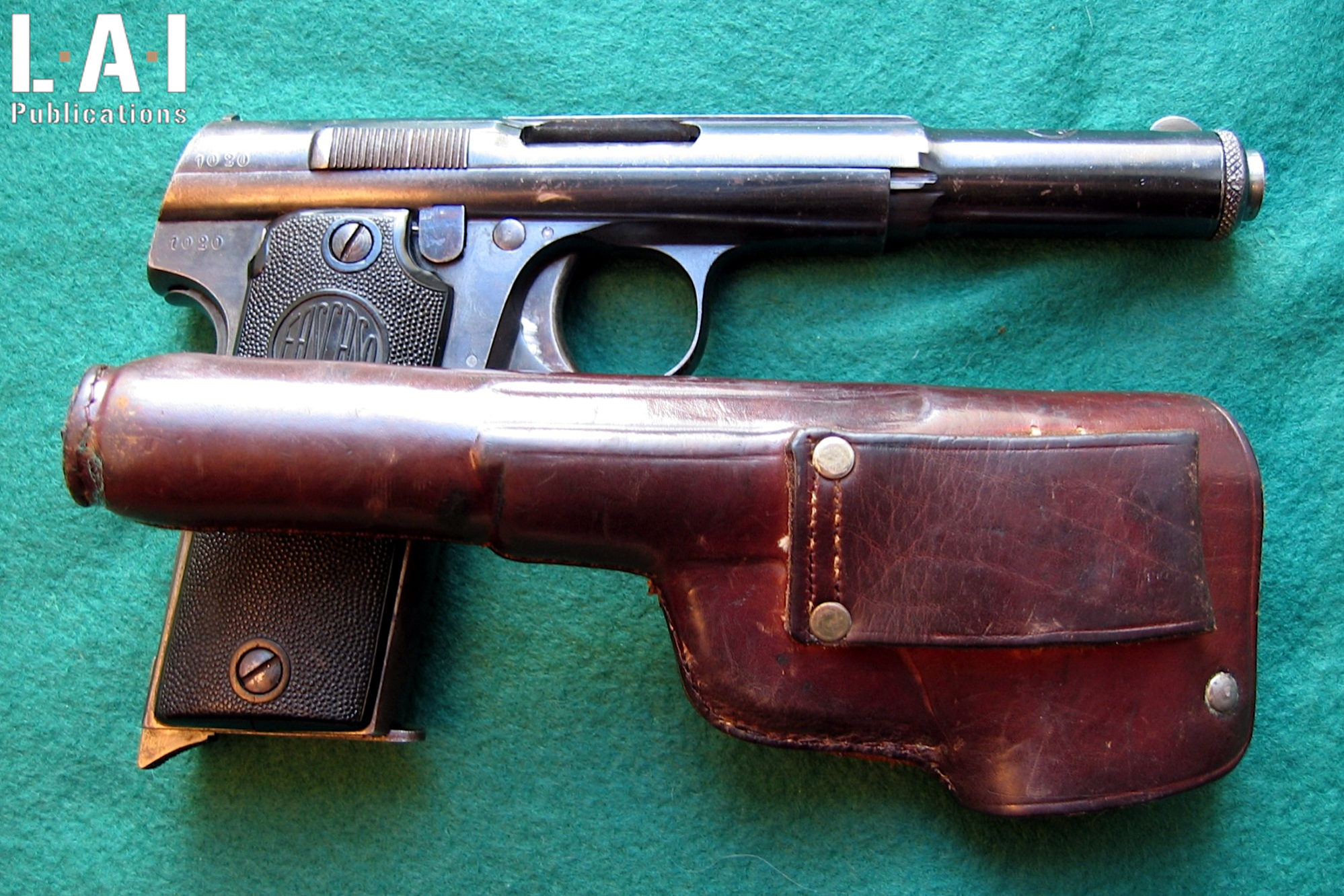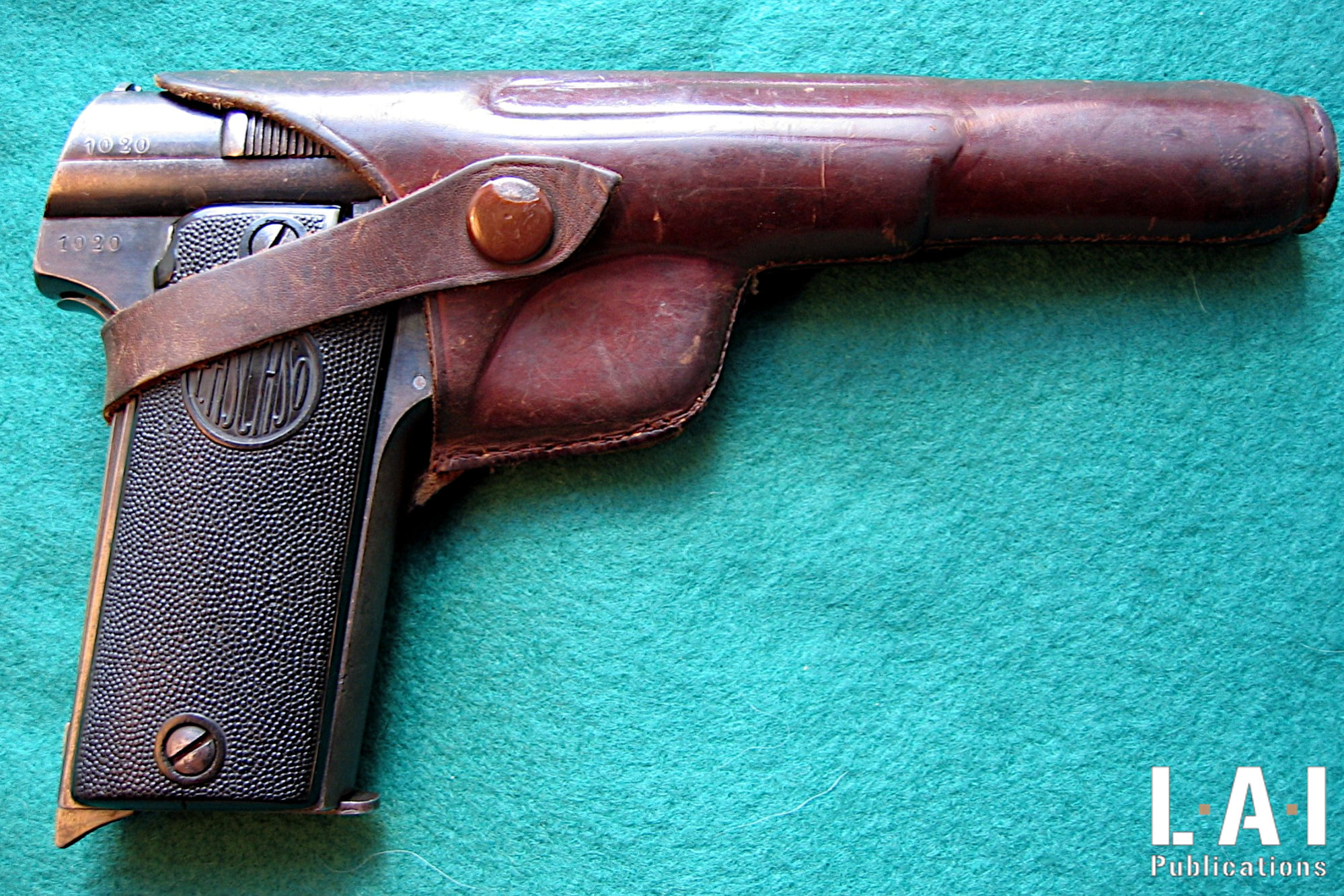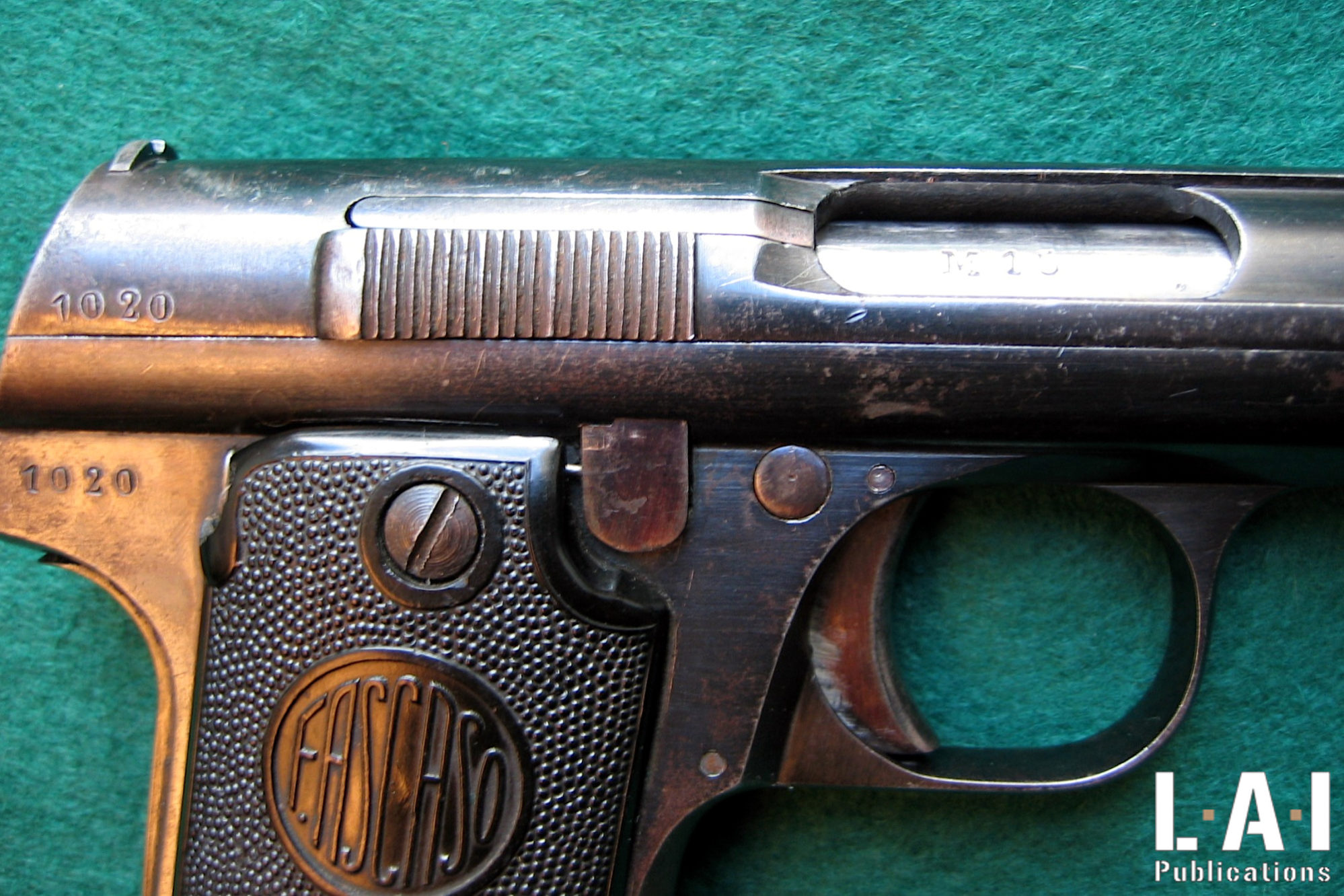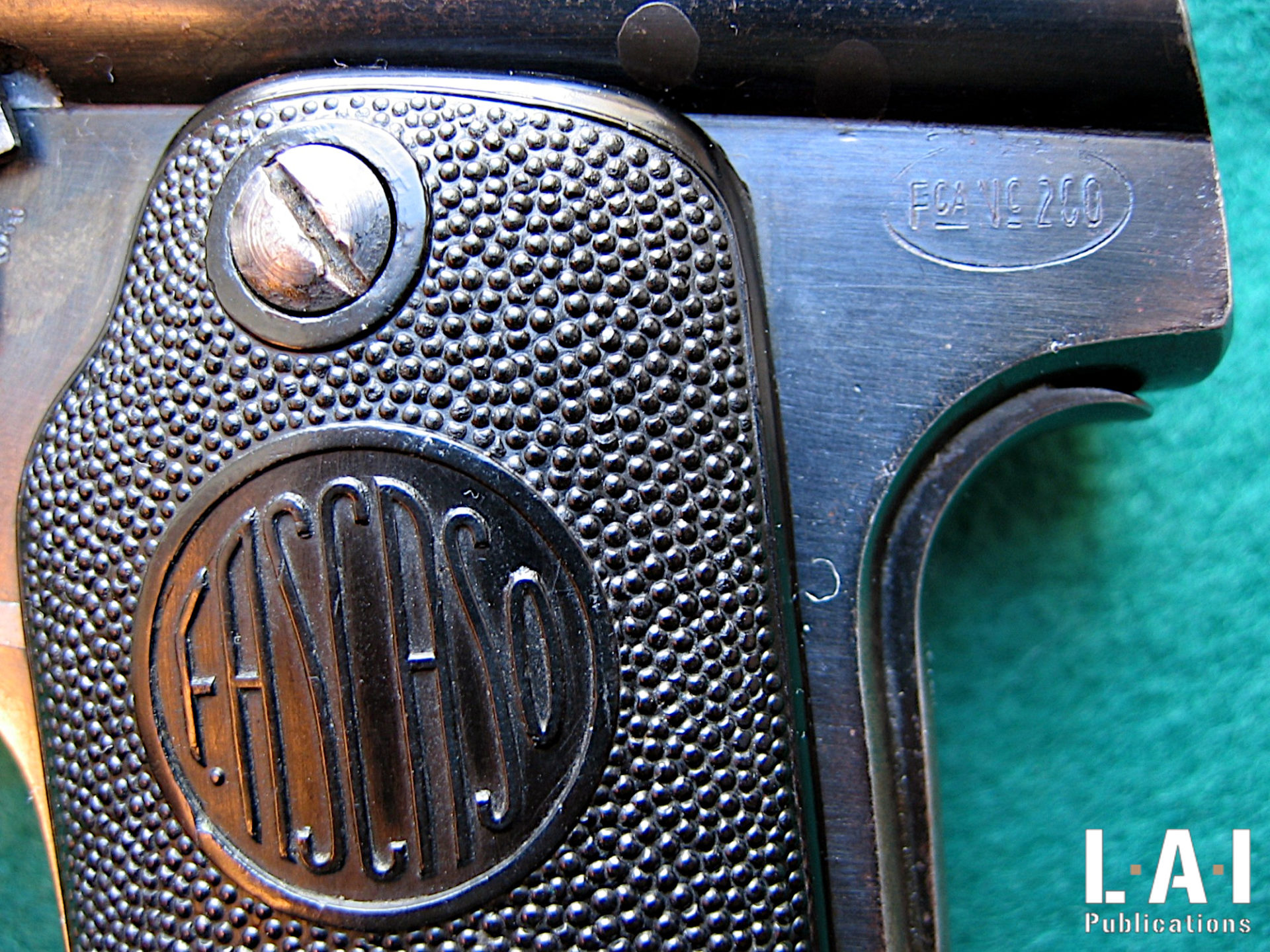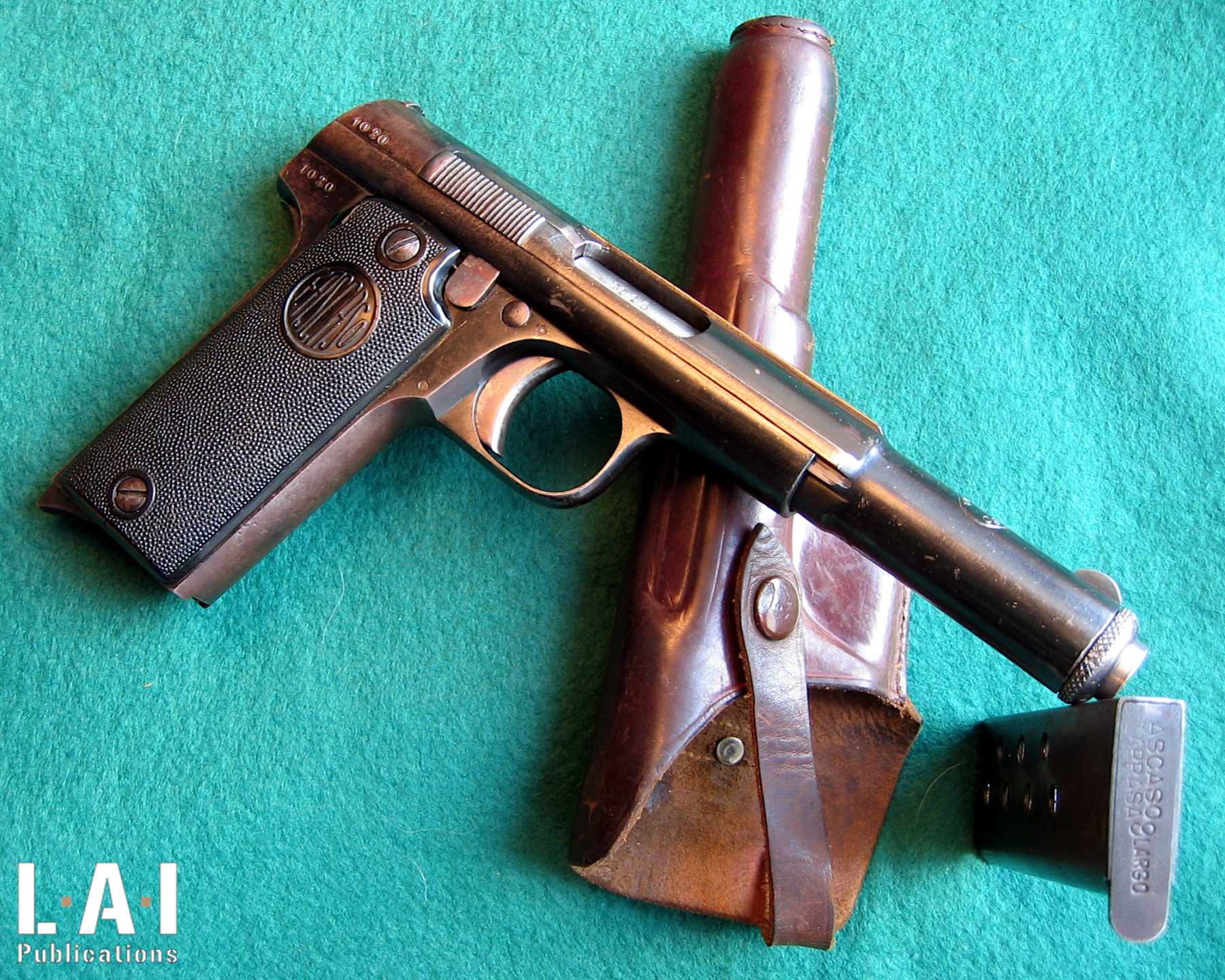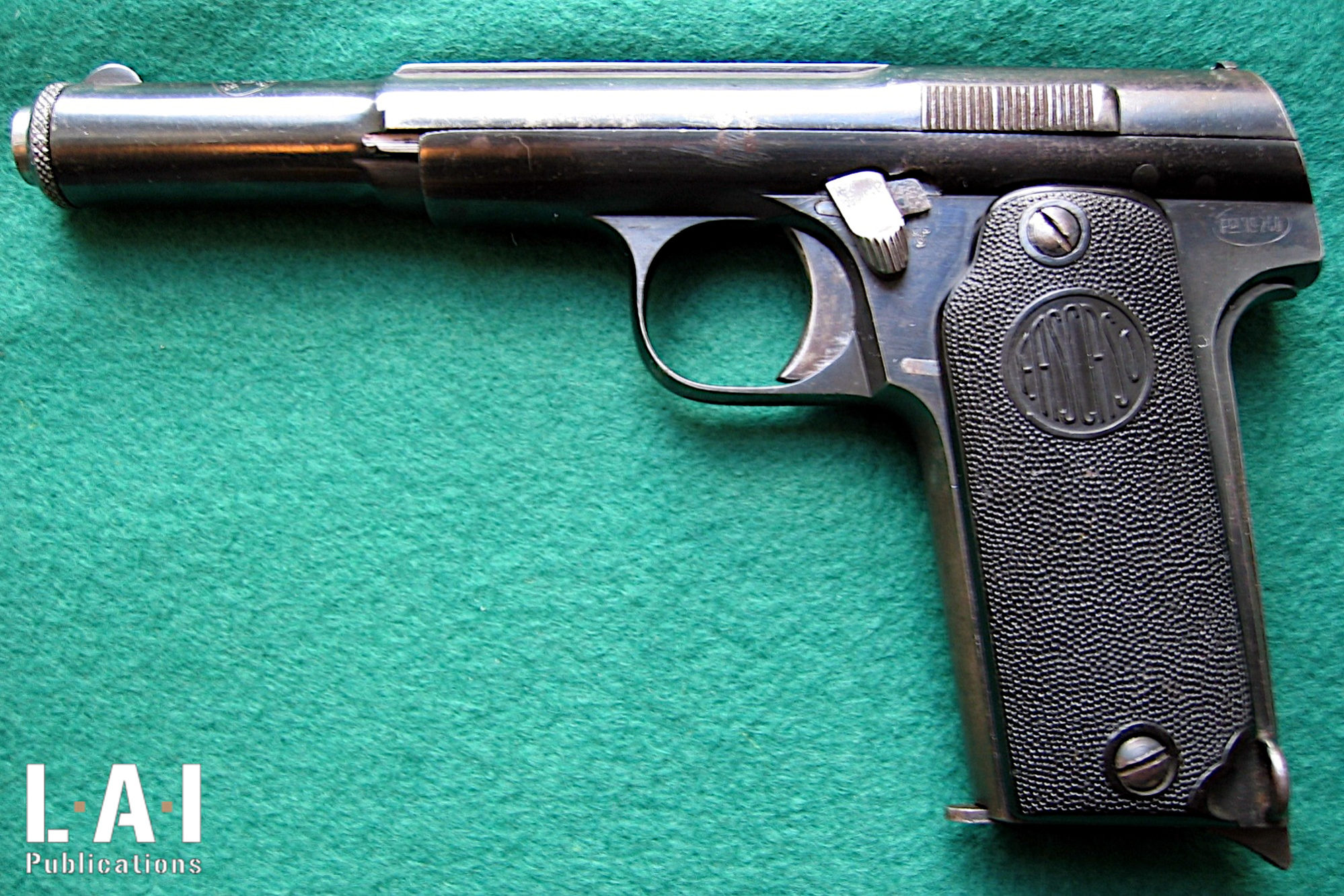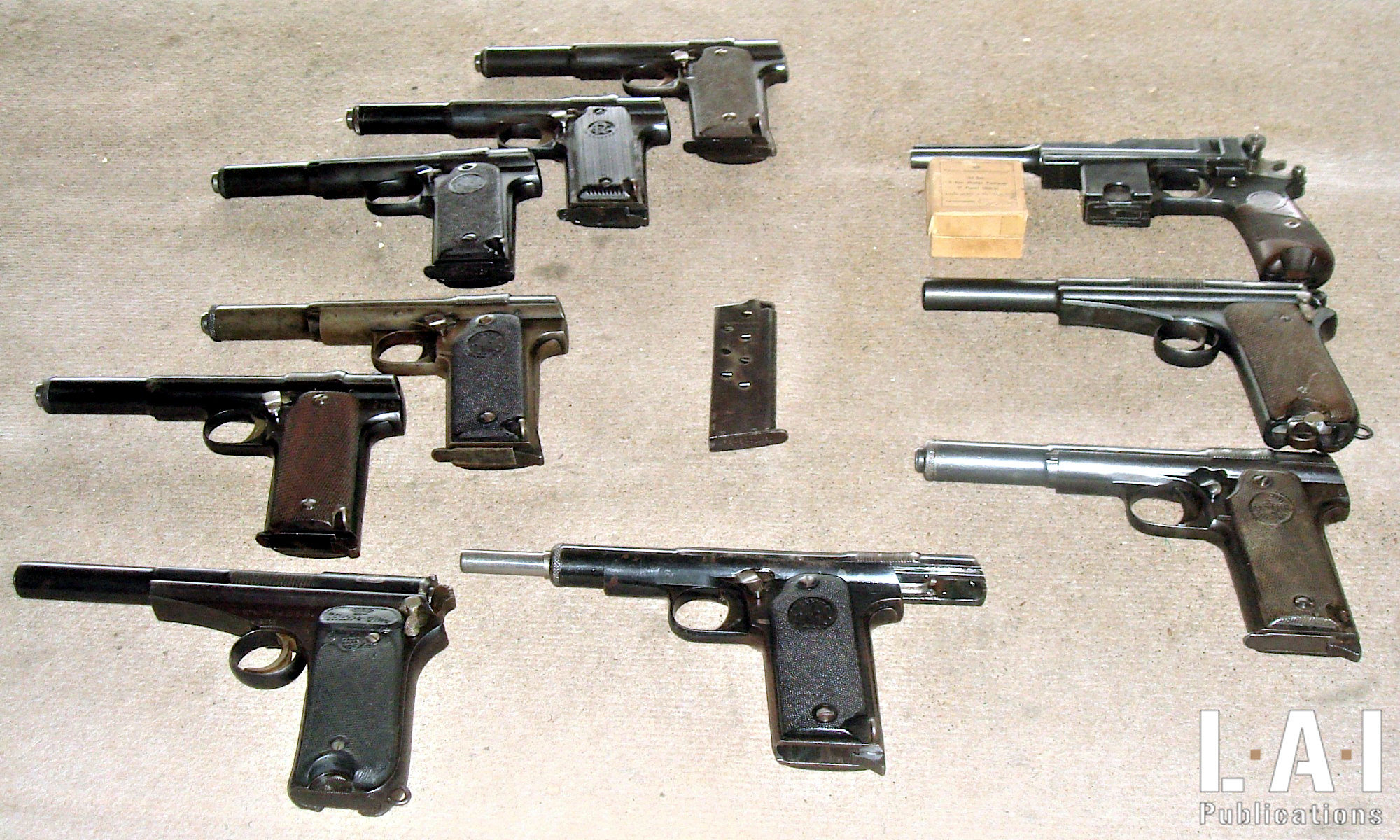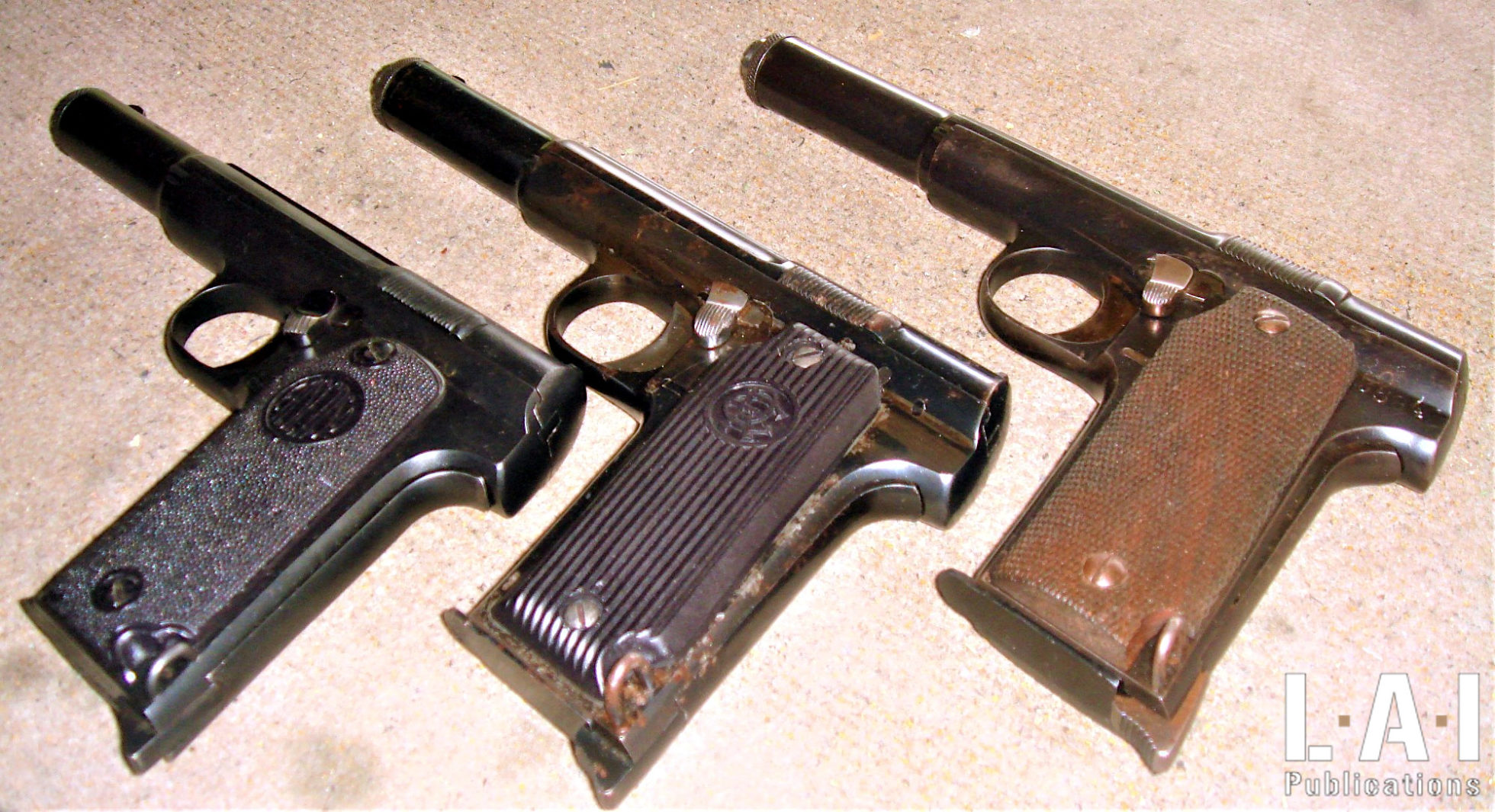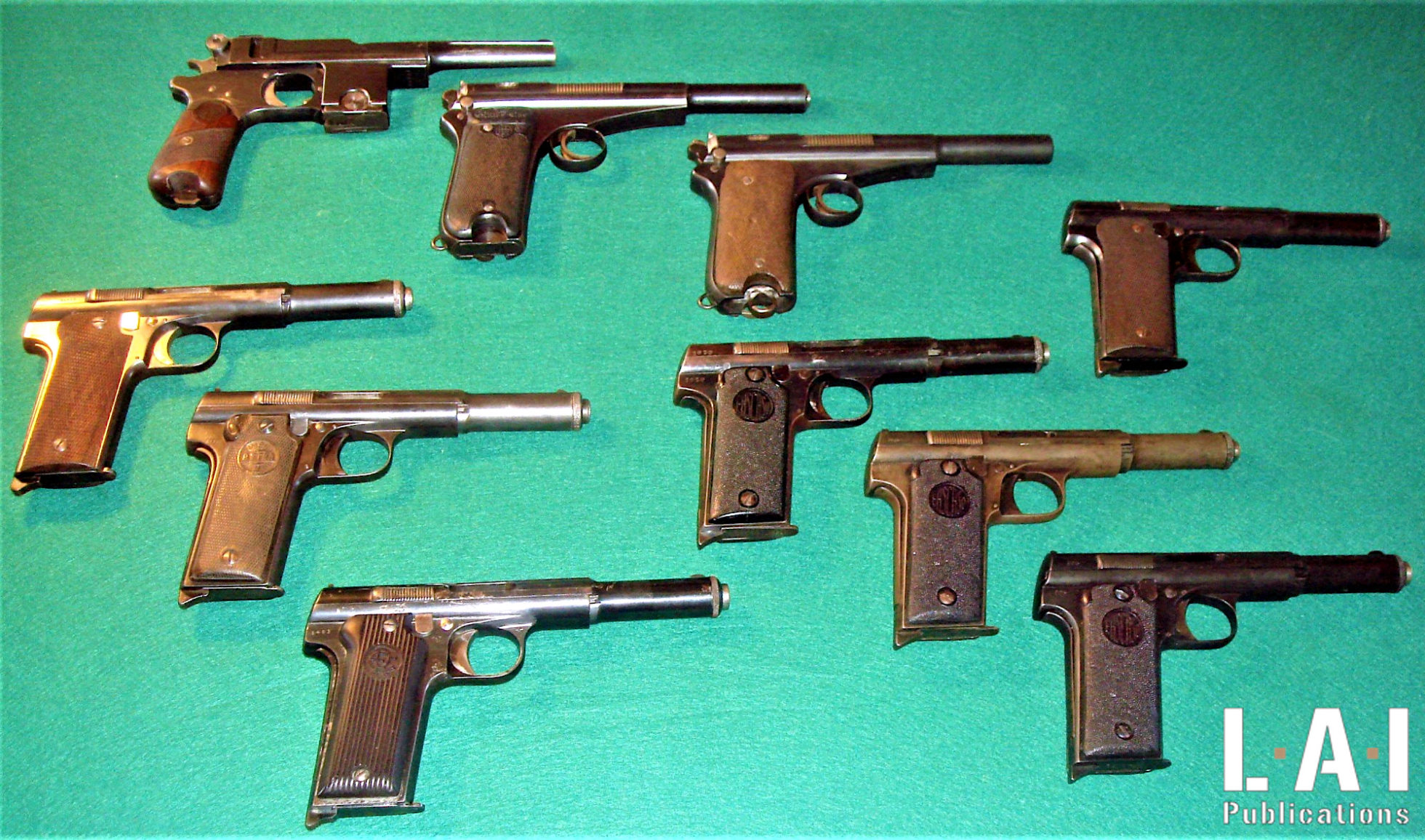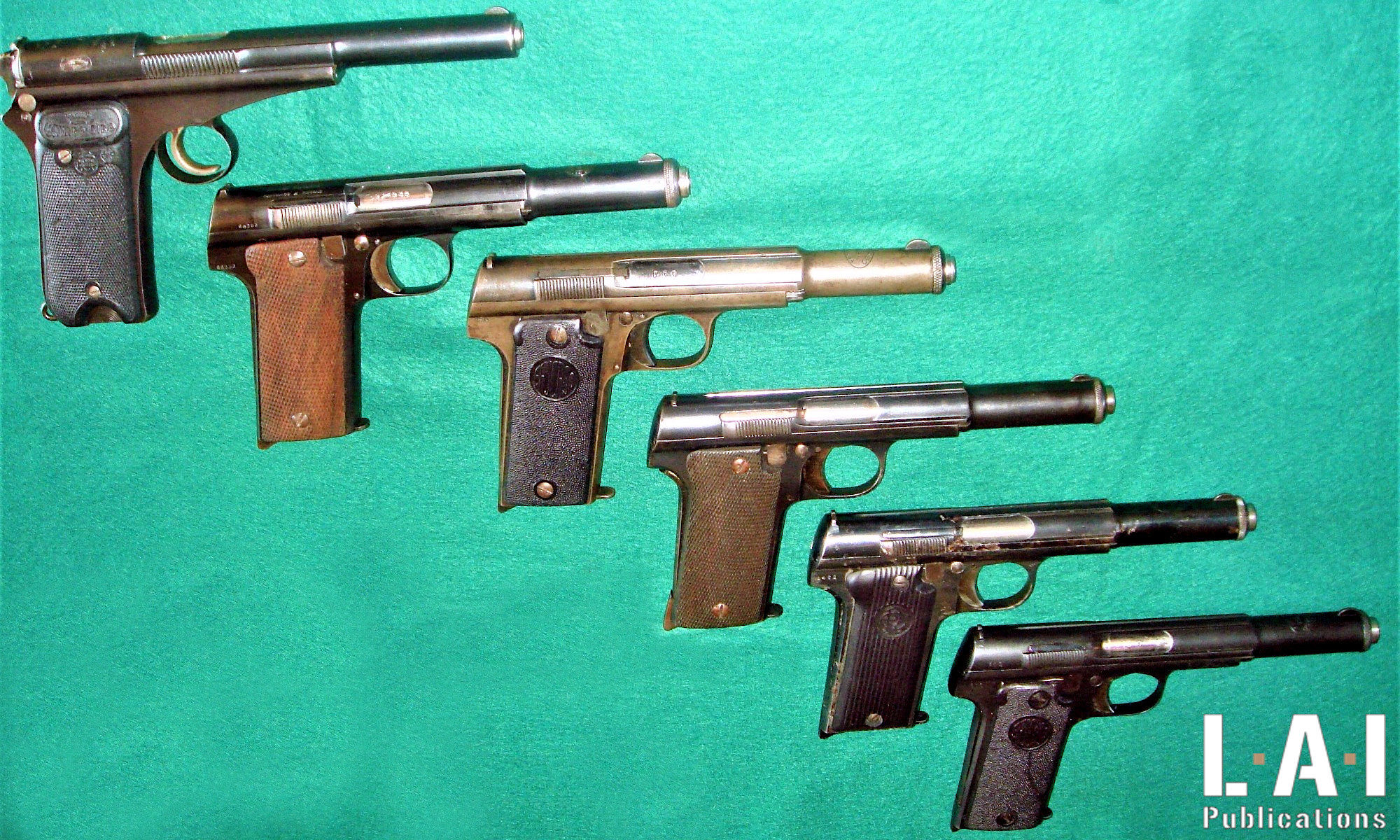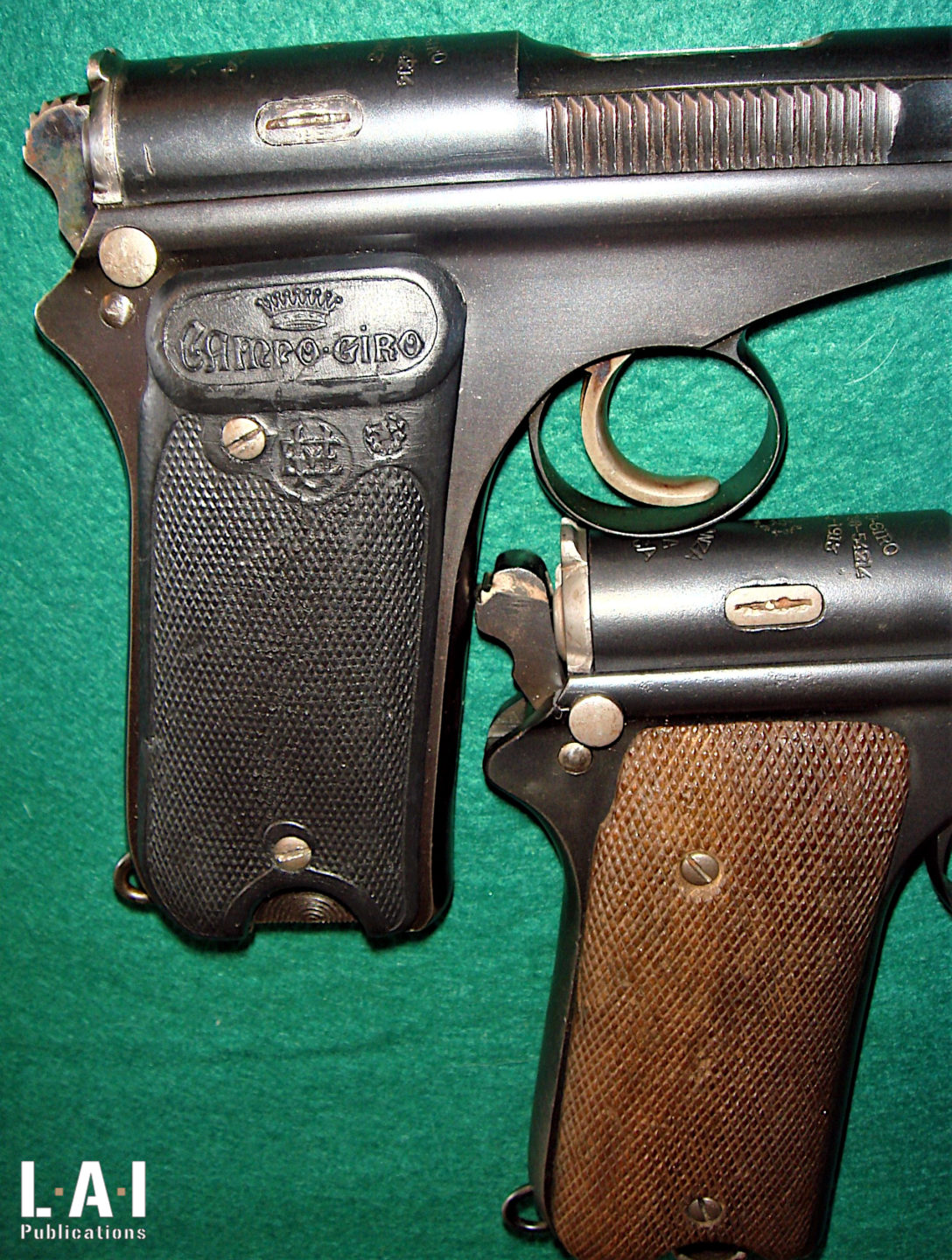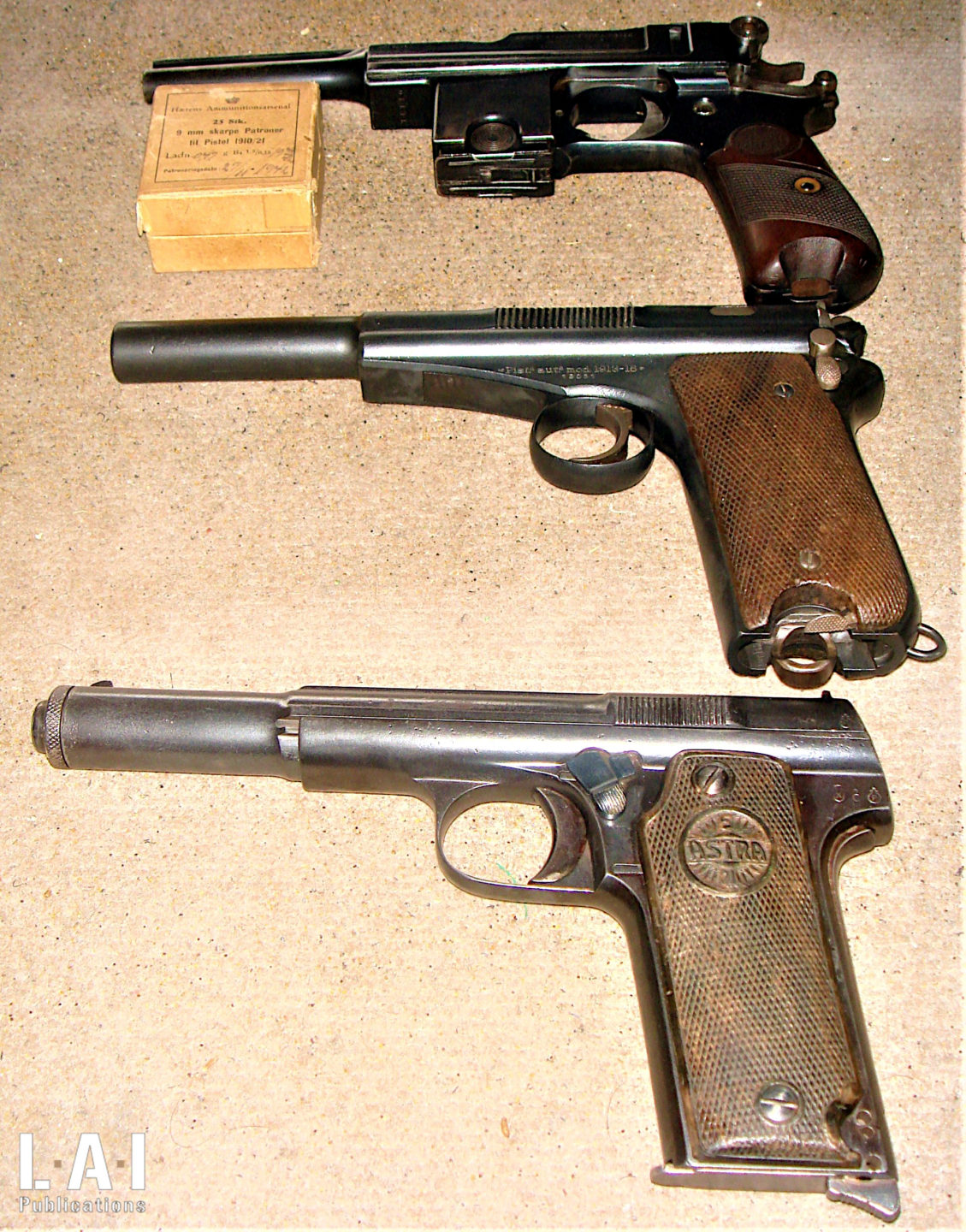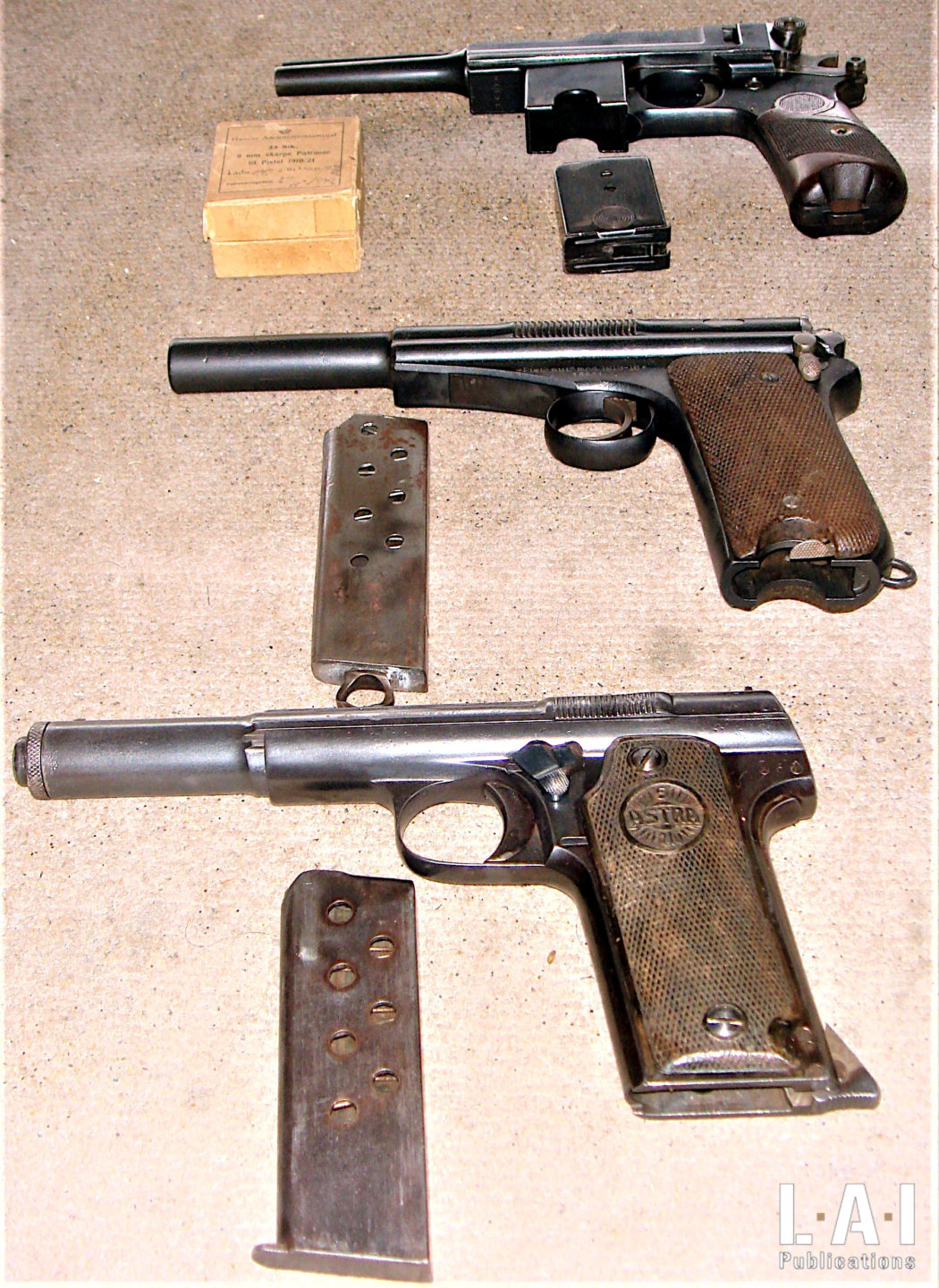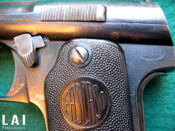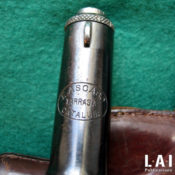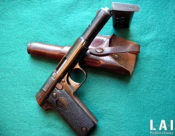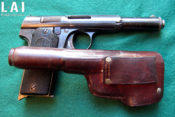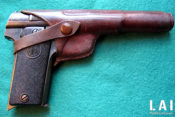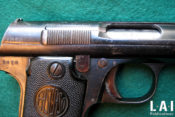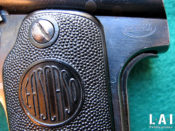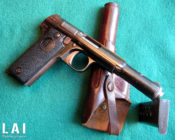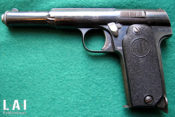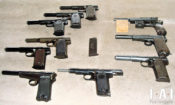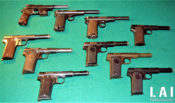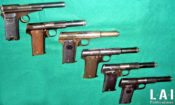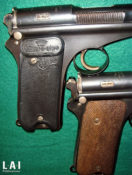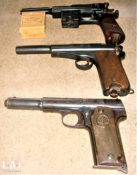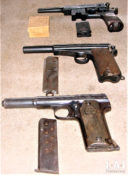Astra 400 and Co.: the story of 4 friends

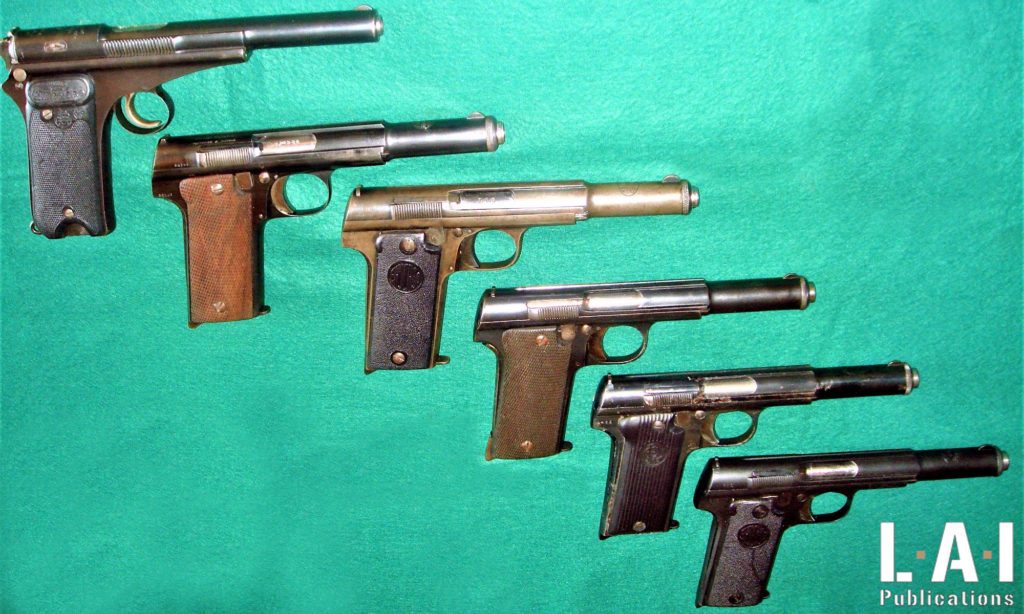
It is a simple story of four friends who simultaneously found themselves the owners of either a Campo-Giro or an Astra 400, or both.
First of all, a bit of a story that we never get tired of telling!
The adventure began in 1903 in the form of prototypes designed by Lieutenant-Colonel Venancio Lopez de Ceballos y Aguirre, Count of Campo-Giro. Finally, in 1910 a first batch of weapons are produced (about 1000 copies). They are chambered for the 9 mm Largo, but development continued until 1913. The weapon would be quickly adopted by the Spanish army in its second version “modelo 1913-16” (1914) and 15,000 copies of all versions combined were produced, including by the Espéranza y Unceta establishments, which would become in 1926: Unceta y Cia. The Espéranza y Unceta settlements were initially set up in Eibar, then in Guernica where the factory escaped the famous bombing. A new version of the weapon was put into production in 1916, then a final one in 1921. This last version was not actually produced industrially, because the firm was in the process of developing its 400 model, immediately adopted as a new service weapon by Spain.
As much as the Campo-Giro was unnecessarily complex and delicate, the Astra (a trademark since 1914) was simple, robust and extremely well designed. It operates from a straight blowback thanks to a very heavy slide held by a powerful recoil spring. This Astra 400 is chambered for the 9 mm Largo and was quickly noticed for its ability to swallow all kinds of ammunition with equal happiness: 9 mm Bergman Bayard (or Largo), 9 mm Steyr, 9 mm Browning long, .38 Colt (rimless smokeless or super auto) and finally, 9 mm Parabellum. This is not a legend, I experienced it with my copy made in Catalonia during the civil war: the Astra 400 deserves its French nickname of “Mangetout” (TN: which can be translated as “eat everything”). Note in this regard that there was “The mysterious 9 mm Campo-Giro cartridge” (judged to have a velocity greater than the 9 mm Bergmann-Bayard, which could be due to the longer barrel of the Campo-Giro) and similar to the 9 mm Largo manufactured by the firm Pirotecnia Militar de Sevilla, but nevertheless different. The Astra 400 also received the nickname “El Puro” due to the particular shape of its slide that made it look like a big cigar (puro in Spanish).
This weapon was a great success and was manufactured until 1946 with 105,000 copies, to which must be added the 59,000 Astra 600 models made in 9 mm Parabellum for Germany (similar but a little shorter however) and the few thousand weapons manufactured by the Spanish Republicans during the Spanish Civil War (Terrassa Ascaso and R.E. in particular.)
At the shooting range!
For this exceptional day, we had a rare Campo-Giro, several Astra 400 and a Terrassa-Ascaso.
Paying honor to whom honor is due, I began with the ancestor of the lineage, the Campo-Giro. At the 25 meters tables, I prepared my weapon and filled without difficulty the magazine with 5 rounds as usual. With the pistol firmly in hand, we noticed that the tiny sights stand out correctly on a white background but become completely invisible on the black of a 50 Pistol target center.
The slope of the grip is acceptable for aiming, but a little steep, it still hurts the wrist. The trigger release is truly detestable: long, scratchy and hard… to end with a release without consistency. The first results are zero and I decide to use an “improved” 50 Pistol target by the addition of a white center: the results are slightly better, but I have to stop the shot because of the stress caused by the multiple stoppages of the tested model. I would still like to point out that in all cases the bullet has reached the target, but sometimes only achieving a two or a three! This Campo-Giro has obviously seen better days and its reliability has been very marginal during our tests, without putting the blame on our cartridges which gave complete satisfaction with the Astra 400 and the Ascaso.
On this subject, moreover, everyone had brought and prepared his own batch of cartridges, each lovingly crafted with the utmost care; in order to try to be objective, each weapon was tested with every batches and only the Campo-Giro caused us some problems. All the “400” were faithful to their reputation as “Mangetout” and worked flawlessly with all the brass and loadings… the only difference was the ejection distance of the brass!
For my part, I provided two reloaded batches as follows:
- 9 mm Largo brass, 8 grams FMJA bullet with a metal core (usually lead, sometimes with a m... More bullet propelled by 0.30 gram of A0 Vectan powder, enough load to cycle the Ascaso, a little light for the Astra.
- Ditto but 0.43 grams of the same powder according to the recommendation of René Malfatti’s book (TN: French most used Reloading Manual): unnecessarily powerful but accurate. The casings remain stuck in the ceiling of the shooting range! The Astra 400 pistols with stiffer and longer recoil springs greatly appreciated this recipe.
The next two in our test program were the Astra 400
One was in perfect condition and while the other has been used for a longer time, but both worked wonderfully. The grip is now a little more natural, but the departures remain hard. The aiming organs have also evolved, while remaining too thin to easily obtain good results… However, every one of us managed to stay in the black area of the 50 Pistol target at 25 meters.
One should know that these heavy weapons are straight blowback operated with a long slide: so, the recoil is quite powerful without being brittle however. All in all, they are very well-built weapons, quite precise and very pleasant to use. The quality of execution is truly surprising with a bluingSurface finishing of steel giving a black (sometimes bluish)... More as beautiful as a Luger of the good times (before WWI). The disassembling is very simple, even easier than that of a Browning 1910 of which it uses part of the principle, the other part being directly inherited from the Browning 1903. In the end, almost only the aesthetic comes from the Campo-Giro. It’s still good to notice that the guiding rails of the slide are very long and inverted compared to Browning-Colt schemes, and this is all the better for accuracy. Finally, concerning the assembly of these models, we note the use of L-shaped pins much easier to extract and put back in place than the traditional straight pins.
The Ascaso, or Terrassa-Ascaso closed the march that day:
It is the rarest of this stand-off and the copy we had was in perfect condition. This model was made during the Spanish Civil War and from 1937 by the Republicans. It was manufactured in the Barcelona area, in Terrassa (Tarrasa in Spanish) to be exact, in only about 5000 samples (8000 according to other unverified sources). Its name was chosen in memory of the anarchist militant Francisco Ascaso killed in 1936. The Republicans also produced another copy in the Valencian region, the “R.E” (Republica Española). The only external difference from the Astra 400 were the grips and, of course, the markings; internally only the grooves of the barrels were not the same… In addition, the quality of finish was more rustic, which is perfectly conceivable, when it comes to war production. For our test, it was the weapon that bore the lowest loads without stoppage, which was favorable to obtaining very honorable scores on our 50 Pistol target.
Conclusion
In addition to the excellent atmosphere on this memorable day, we will all keep in mind this unique gathering of these original, reliable and powerful Spanish weapons. Their potential for precision is still respectable; proof of this is the many modifications of sighting organs made by our Iberian neighbors in order to draw the quintessence against the 50 Pistol target!
Marc Barret
Note: This article is also available (in French only) on the UFA website: https://www.armes-ufa.com/
This is free access work: the only way to support us is to share this content and subscribe. In addition to a full access to our production, subscription is a wonderful way to support our approach, from enthusiasts to enthusiasts!
Sources:
- Wikipedia.
- Pistols from around the world by Ian Hogg & John Weeks (ed. de Vecchi)
- Pistols and submachine guns of the Republic, war production by J Abad, M.Estirado & F. Fuentes.
- Blue Book of Gun Values de S.P. Fjestad. (B.B. Publications).


